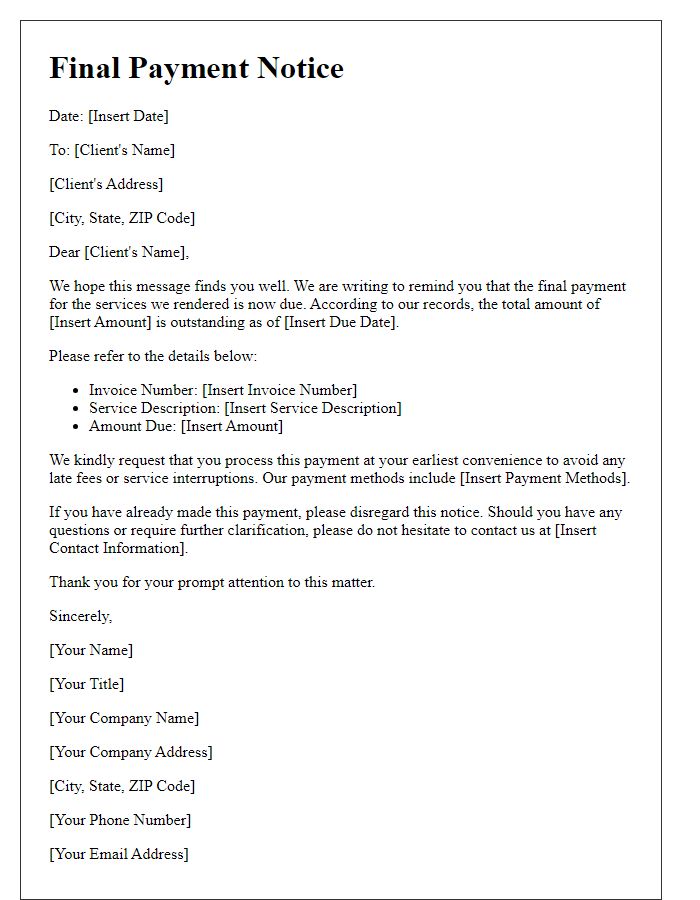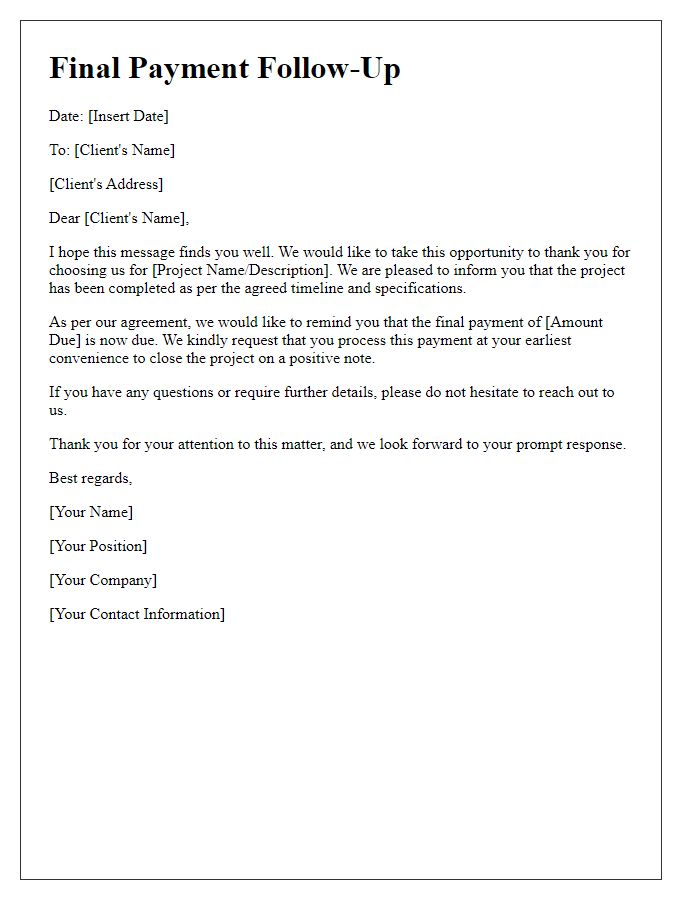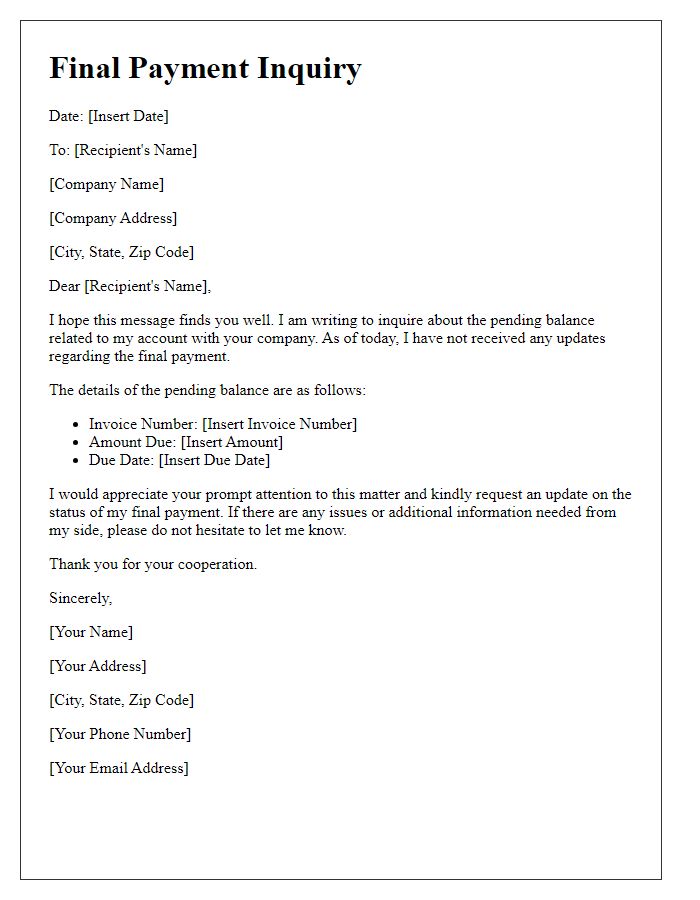Are you in the process of wrapping up a project and need to send out a final payment request? Crafting the right letter can be crucial to ensuring you receive the funds owed without any hiccups. In this article, we'll provide you with a clear and effective template that will help you communicate your request professionally and courteously. So, if you're ready to get that last payment settled, keep reading for our step-by-step guide!

Clear subject line
Prompt payment requests are essential for maintaining cash flow, especially for businesses engaged in freelance projects or contractual work. A succinct and clear subject line, such as "Final Payment Request for Invoice #12345 Due [Insert Date]," ensures that the recipient immediately understands the purpose of the email. The body of the message should detail the services rendered (e.g., graphic design or consulting), the original agreed amount ($1,500), and the payment terms specified in the contract (net 30 days from invoice date). Including the invoice link or attachment facilitates easy processing for accounts payable departments. Additionally, a polite reminder about the due date (e.g., May 15, 2023) emphasizes the urgency while maintaining professionalism.
Personalized greeting
In business transactions, final payment requests are crucial to ensure timely settling of accounts. A professional yet personalized greeting fosters a positive relationship with clients. For instance, using the client's name coupled with a friendly tone creates an inviting atmosphere. Include details like the specific service provided, the invoice number (e.g., Invoice #12345), and outstanding amount due (e.g., $1,000) to clarify the request. Highlight the due date (e.g., September 30, 2023) for the payment to encourage prompt action while maintaining professionalism. A personalized approach can significantly enhance the likelihood of receiving the final payment efficiently.
Detailed payment information
A final payment request serves as a critical communication tool between service providers and clients, ensuring that both parties are aligned on outstanding balances. Including detailed payment information is essential for clarity. Key elements involve the total amount due, specified payment methods (such as bank transfers, credit cards, or digital wallets), and payment deadlines to avoid late fees. Additionally, referencing any previous invoices, services rendered, or contracts from the agreement reinforces accountability. Clear instructions regarding where to send payments, including bank account numbers or links to payment portals, enhance the user experience and decrease the potential for errors. This structured approach minimizes confusion and expedites the payment process, fostering positive business relationships.
Firm deadline
Final payment requests require clarity and urgency. A final payment (often a specified amount remaining from a contract or agreement) must be made by the stipulated deadline to avoid further actions or penalties. Clear communication regarding terms, specified due dates (such as 30 days from invoice date), and consequences of delays ensures prompt processing. The tone of the request should remain professional, yet firm, to convey the seriousness of the situation. Additionally, including relevant invoice numbers, contract details, and payment methods aids in avoiding confusion and facilitates a swift resolution.
Contact information for queries
In the final payment request, clearly indicate the total outstanding amount due, along with a specified deadline for payment. Include detailed contact information, such as a phone number and an email address, ensuring that clients can easily reach out for any queries or clarifications regarding the payment. Specify your organization's name, located at a particular address, to provide assurance and professionalism. Additionally, mention acceptable payment methods to facilitate a smooth transaction process, enhancing the likelihood of prompt payment from clients.
Letter Template For Final Payment Request Samples
Letter template of final payment confirmation request for client services.













Comments